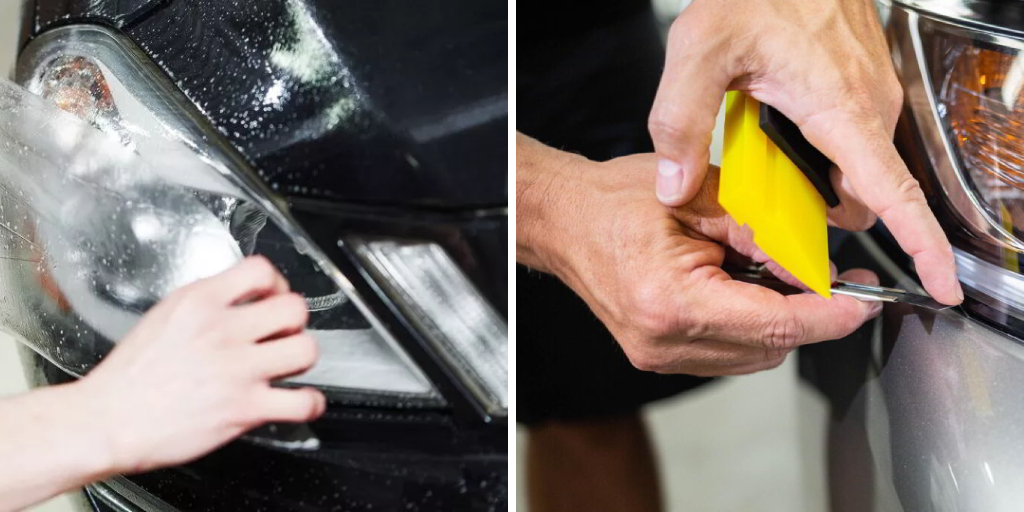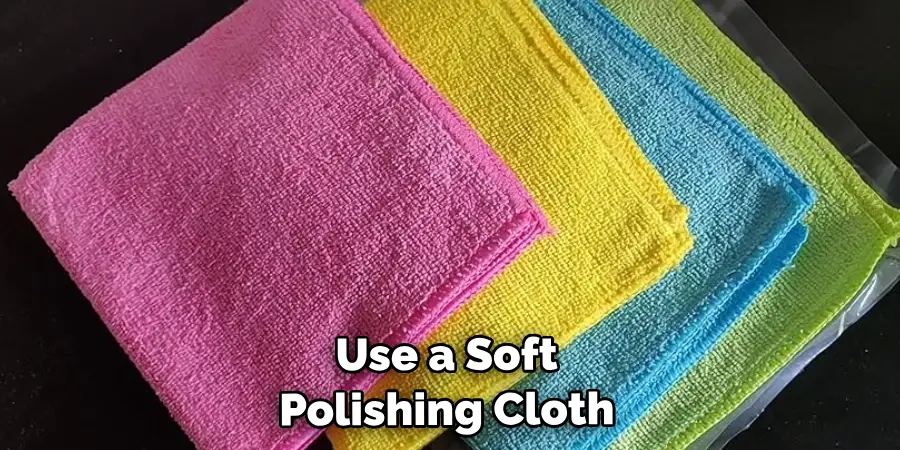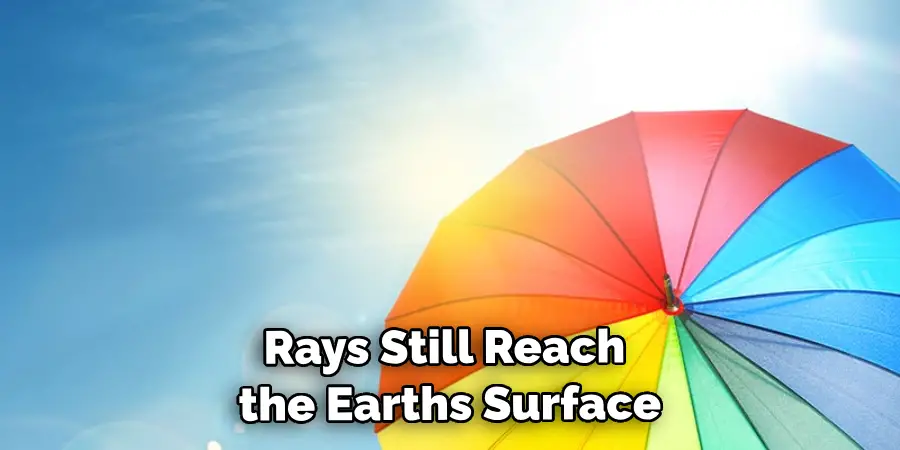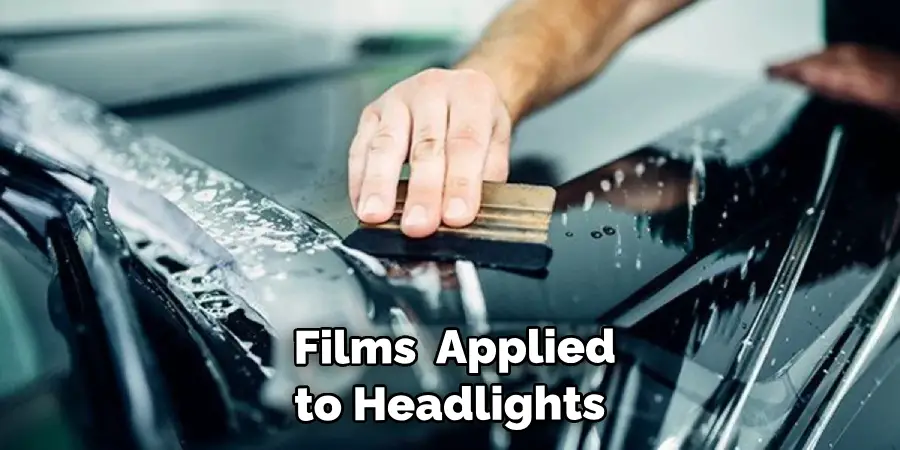Headlights are an essential part of any vehicle as they provide visibility during low light conditions and at night. However, just like any exterior part of your car, headlights are exposed to various elements that can cause damage over time. One of the most common causes of headlight damage is exposure to UV rays from the sun.

The main goal of this document is to provide you with the necessary knowledge and skills to protect your car headlights from UV damage. In recent years, there has been an increase in the use of polycarbonate headlight lenses that are more prone to yellowing and discoloration due to prolonged exposure to UV rays. In this blog post, You will learn in detail how to protect headlights from uv damage.
Step-by-step Instructions for How to Protect Headlights From UV Damage
Step 1: Inspect Headlights
Before you begin the process of protecting your headlights from UV damage, it is important to inspect them for any existing wear and tear. Look for cracks, fogging, or discoloration on the surface of the headlights. These are signs that your headlights may already be damaged by UV rays.
Step 2: Clean Your Headlights
To properly protect your headlights, you need to start with a clean surface. Use a gentle soap and water solution or a specialized headlight clean to remove any dirt, grime, or residue from the surface of the headlights. After cleaning your headlights, be sure to dry them thoroughly with a clean, soft cloth. This will prevent any streaks or water spots from forming on the surface.
Step 3: Apply UV Sealant
There are several types of UV sealants available specifically for protecting headlights. Choose one that is suitable for your headlight material and apply it according to the manufacturer’s instructions. This will act as a barrier against harmful UV rays. After applying the UV sealant, use a soft polishing cloth to gently buff the surface of the headlights. This will help evenly distribute the sealant and ensure maximum protection.

Step 4: Repeat
For optimal protection, it is recommended to repeat the UV sealant application process every few months, or as directed by the manufacturer. If you plan on leaving your car parked for an extended period of time, consider covering it with a car cover. This will not only protect your headlights from UV damage, but also the rest of your car’s exterior.
Step 5: Park in Shade
Whenever possible, try to park your car in a shaded area to minimize exposure to direct sunlight. This will help prolong the lifespan of your headlights.When cleaning your car, be sure to avoid using harsh chemicals or cleaners on the surface of your headlights. These can strip away the protective UV sealant and leave your headlights vulnerable to damage.
Step 6: Regularly Inspect and Maintain
Lastly, make it a habit to regularly inspect and maintain your headlights. Keep them clean and free from any debris or buildup to ensure they are properly protected from UV damage. If you notice any signs of wear or discoloration, it may be time to reapply the UV sealant for added protection.

By following these simple steps, you can effectively protect your headlights from UV damage and ensure they stay in top condition for years to come. Remember to regularly maintain and care for your headlights, as they are not only important for your safety while driving, but also contribute to the overall appearance of your car.
Safety Tips for How to Protect Headlights From Uv Damage
- Wear protective gloves and eyewear when applying sealant or cleaning headlights to avoid any contact with chemicals.
- Work in a well-ventilated area to avoid inhaling fumes from the sealant or cleaners.
- Follow the manufacturer’s instructions carefully when applying sealant, as different types may require different methods of application.
- Do not leave the headlights exposed to direct sunlight for extended periods of time, especially if they have not been protected with a UV sealant.
- Avoid touching the surface of the headlights with bare hands, as oils from your skin can damage the protective layer.
- Use a microfiber cloth to clean and dry headlights, as it is less likely to scratch the surface compared to other types of cloths.
- If you are unsure about the type of UV sealant to use for your headlights, consult a professional or refer to your car’s manual.
By following these safety tips, you can protect not only your headlights but also yourself while working on them. Remember to always prioritize safety when performing any maintenance tasks on your car.
What is Uv Damage and How Does It Affect Headlights?
Ultraviolet (UV) rays are a type of electromagnetic radiation that is emitted by the sun. While our atmosphere acts as a natural filter, some UV rays still reach the earth’s surface, and they can cause damage to various materials, including car headlights.

UV damage occurs when UV rays hit an object and break down its molecular structure. This process is called photodegradation and can cause fading, discoloration, cracking, and other types of damage to materials that are exposed to UV rays. So how does this affect car headlights?
Most modern cars come equipped with plastic headlight covers instead of glass ones. Plastic is more durable and lightweight than glass, but it is also more susceptible to UV damage. Over time, constant exposure to sunlight can cause the plastic to become yellow, hazy, and opaque. This not only affects the appearance of your car but also reduces the effectiveness of your headlights.
How to Protect Headlights From Uv Damage
Luckily, there are several steps you can take to protect your car’s headlights from UV damage:
- Wash and Wax Your Car Regularly: By keeping your car clean and applying a coat of wax regularly, you can create a protective barrier on the surface of your headlights.
- Park in Shaded Areas: Whenever possible, park your car in a shaded area, such as under a tree or in a garage. This will reduce the amount of direct sunlight that hits your headlights.
- Use a Protective Film: There are specially designed films that can be applied to your headlights to protect them from UV rays. These films are transparent and can provide an extra layer of protection against fading and discoloration.
- Invest in Headlight Covers: If you live in an area with intense UV rays, consider investing in headlight covers. These are custom-made plastic or vinyl covers that can be easily attached to your car’s headlights. They not only protect against UV damage but also scratches and other types of physical damage.
- Regularly Inspect Your Headlights: Make it a habit to check your headlights for signs of UV damage regularly. If you notice any discoloration or haziness, take the necessary steps to protect them from further damage.

By taking these simple precautions, you can extend the life of your car’s headlights and keep them looking clear and bright for years to come. Remember, prevention is always better than cure when it comes to protecting your headlights from UV damage.
Additional Tips for Maintaining Your Headlights
Aside from protecting them from UV damage, there are other steps you can take to ensure your car’s headlights stay in top condition:
- Clean Them Properly: When washing your car, make sure to give special attention to your headlights. Use a mild detergent or soap and avoid harsh chemicals that could damage the protective coating on your headlights.
- Wax Them: Applying a coat of wax on your headlights can help reduce the effects of UV rays. It creates an additional layer of protection and can also make your headlights shine brighter.
- Use Protective Films or Covers: There are various products available in the market that provide an extra layer of protection for your headlights. These can include films that are applied directly on the headlights or covers that can be easily removed and replaced.
- Park in Shade: If possible, try to park your car in a shaded area. This will help reduce the amount of direct sunlight exposure your headlights receive, ultimately minimizing UV damage.
- Replace Bulbs When Necessary: Over time, bulbs inside your headlights may become dim or start to flicker. Make sure to replace them with new ones as soon as possible to avoid any further damage.
- Regularly Check for Damage: It’s important to regularly inspect your headlights for any cracks, chips or other damage. If you notice any, make sure to get it fixed immediately before it leads to more severe problems.
By following these tips and taking proper care of your headlights, you can protect them from UV damage and ensure they last for a long time. Remember, prevention is always better than cure, so be proactive in maintaining your car’s headlights.
Conclusion
In conclusion, it is essential to protect your headlights from UV damage to ensure their longevity and functionality. UV damage not only affects the appearance of your vehicle but also compromises its safety measures. By following the tips mentioned above, you can effectively protect your headlights from UV damage and extend their lifespan.
Regularly cleaning and applying a protective coating on your headlights are simple yet effective ways to prevent them from fading or yellowing due to UV exposure. Additionally, parking your car in shaded areas or using a car cover can provide extra protection from the sun’s harmful rays. Moreover, choosing high-quality headlight materials and investing in UV-resistant films can also significantly reduce the risk of UV damage. I hope reading this post has helped you learn how to protect headlights from uv damage. Make sure the safety precautions are carried out in the order listed.
You Can Check It Out to Wire Headlights Directly to Battery

